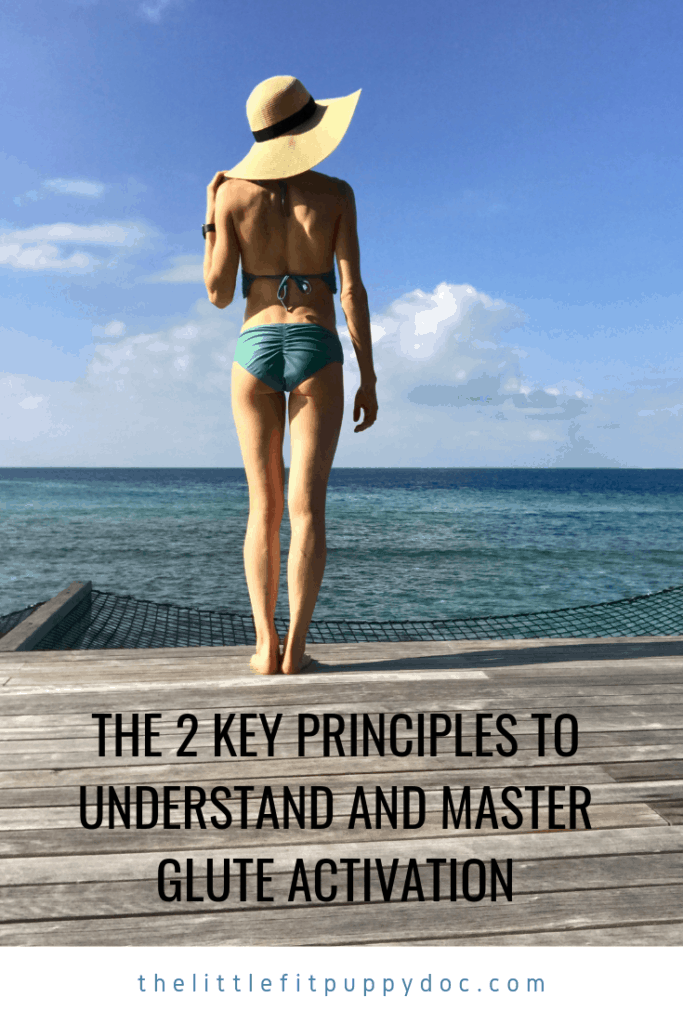
I want to preface this post by stating that I am not a certified personal trainer nor a physical therapist. My goal with this post is to simply share what concepts (after spending a lot of time, money, and hours researching) allowed me to have some “light-bulb” moments and finally understand how to master glute activation. If you’re experiencing any pain or muscle imbalances, I highly recommend consulting with your doctor and a physical therapist first.
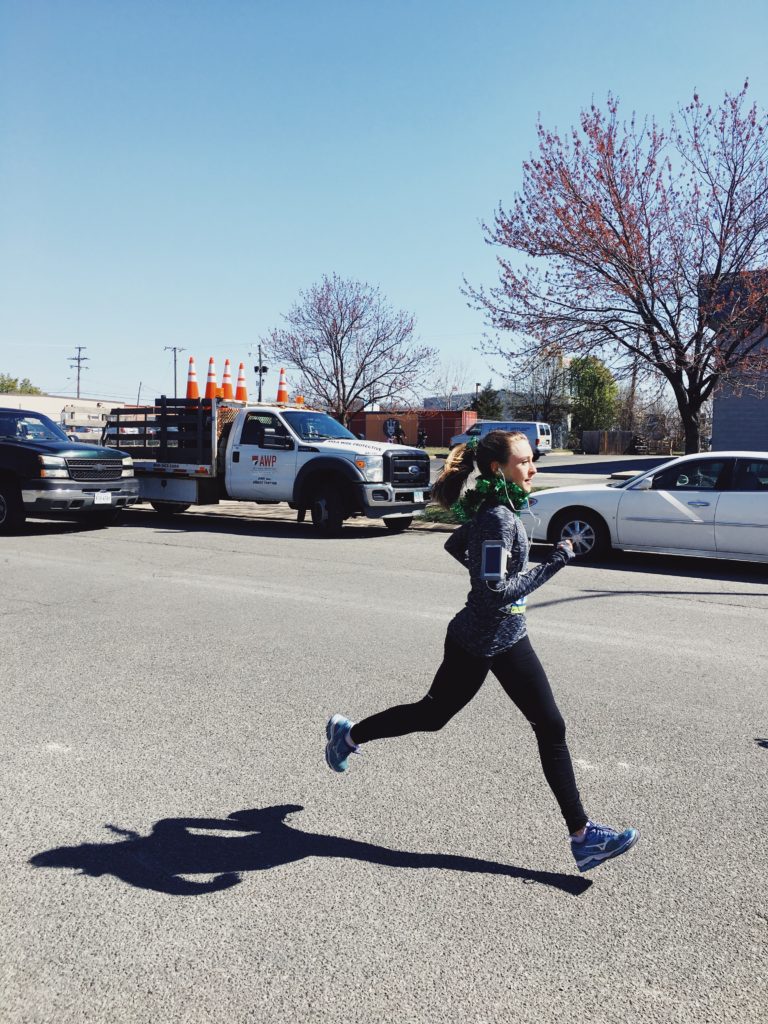
My battle with running injuries and how it finally led me to understanding glute activation
I’m a runner. And type-A. These two characteristics often go hand-in-hand. I can also be stubborn. What that means is that I like to run often, and I’m not good at taking breaks when I should. Being a runner also means that I’ve experienced my share of injuries. Despite my better judgement I have run through a lot of them much longer than I should have, ignoring my wiser inner voice that knew better all along. The excuses I told myself ranged from needing that mental escape for stress relief to justifying that I could continue to run if I also focused more on mobility like yoga and foam rolling. It has been a long and much more difficult journey than it needed to be for me to finally get to the point where when something starts to hurt, I slow down and listen. Like all of my 20’s.
My first major running injury occurred in 2009 when I was marathon training for the Bay State Marathon. My IT band got tighter and tighter causing pain on the outside of my knee. But after so many hours spent on training runs and with a goal of qualifying for Boston postponing the marathon didn’t feel like an option. As a reward for being stubborn, the race was 30 degrees and a torrential downpour transitioning to a blizzard later that day (in October…thank you, New England). My knee was very painful by the end of the race, and I missed qualifying for Boston by less than 2 minutes – about the amount of time I waited behind someone in line during my one bathroom stop before they realized no one was even in the porta potty. After the marathon, I ran one short 5k race the following weekend before realizing the pain was going to force me to take my first break from running – for a while.

In reality, the forced break from running was one of the best things that could have happened. It not only introduced me to the incredible therapeutic powers of acupuncture (which led me to become certified in acupuncture for my furry patients), but it also introduced me to strength training. Instead of running high mileage at least six days a week, I started trying different strength and HIIT programs which would lead me to become a faster and stronger runner.
It took a few years for me to really be able to run again without having IT band issues. Eventually, I realized that three days of running combined with a focus on strength and mobility was the sweet spot. Even though I was running far fewer miles, I was PR’ing constantly- amazing what strength training can do!
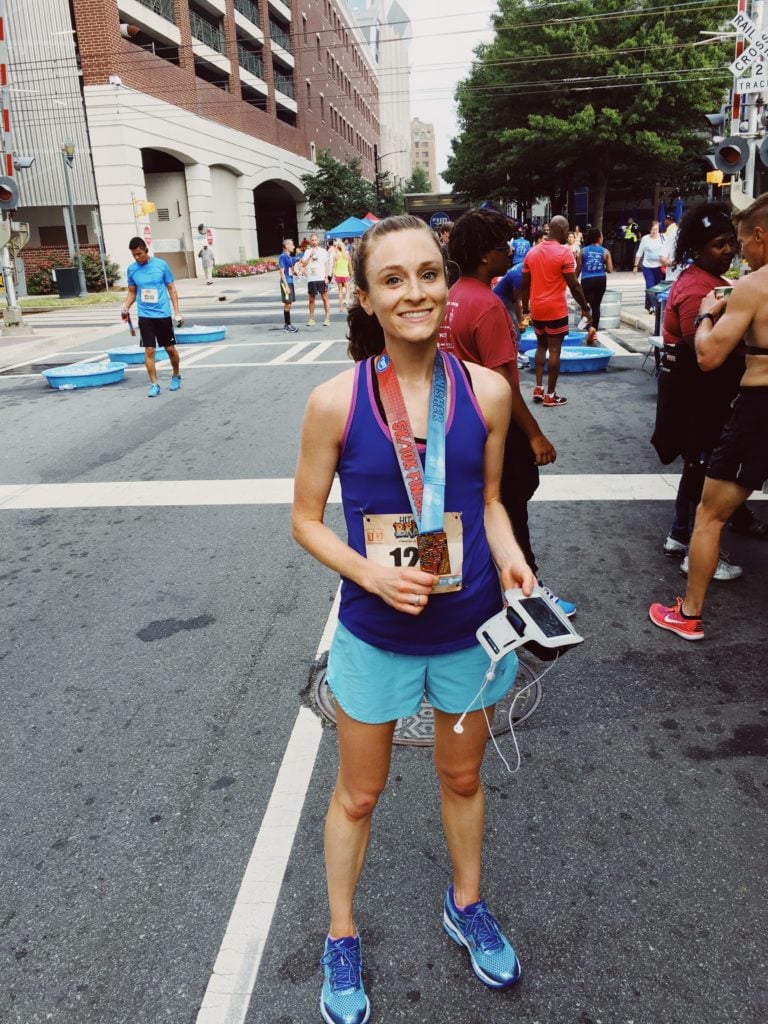
It seems like at this point the story should end happily ever after with me finding the perfect balance and never having a running injury ever again. That would be cool, but that’s not what happened. While I had some awesome races and a lot of great miles pounding pavement, I tended to continue the pattern of getting an injury – often after a half marathon.
After running the Charlotte half marathon a couple of years ago, I started to have hip flexor pain. I was fortunate to find Green Apple Sports and Wellness, an amazing office offering a combination of physical therapy, chiropractic, and acupuncture, nearby (I highly recommend them for any local readers). This is where they identified that my glutes on the side of my strained hip flexor weren’t firing properly. Through chiropractic adjustments and guided glute activating exercises I was able to get back on the road. At this point I wasn’t overdoing my running mileage. I was supplementing with strength training, AND I even understood that sometimes glute muscles shut off and I was equipped with glute activating exercises to turn them on. Well, THIS STILL WASN’T ENOUGH.
Last year, I started to have pain at the point of my hip that worsened the more I ran. This time, I recognized that I was having a hard time activating my glute muscles despite consistently performing glute activating and strength exercises. I had sadly moved away from Green Apple Sports, and this time I had a difficult time finding a local professional who could identify the underlying issue of my darn lazy butt. I was left to figure things out on my own, and I wasn’t doing a great job.
I’d like to say that soon after I started to feel pain I stopped running because I’m older and wiser, but that would be a lie. I kept thinking the pain wasn’t that bad, or I would take a couple of weeks off (which felt REALLY long and generous). It would start to feel better, so I would resume running afraid of losing my endurance and speed. This was especially important to me because I have literally been one second away in multiple races from a 5k PR and it was a 2018 New Year’s resolution to achieve (Type-A list maker, remember).
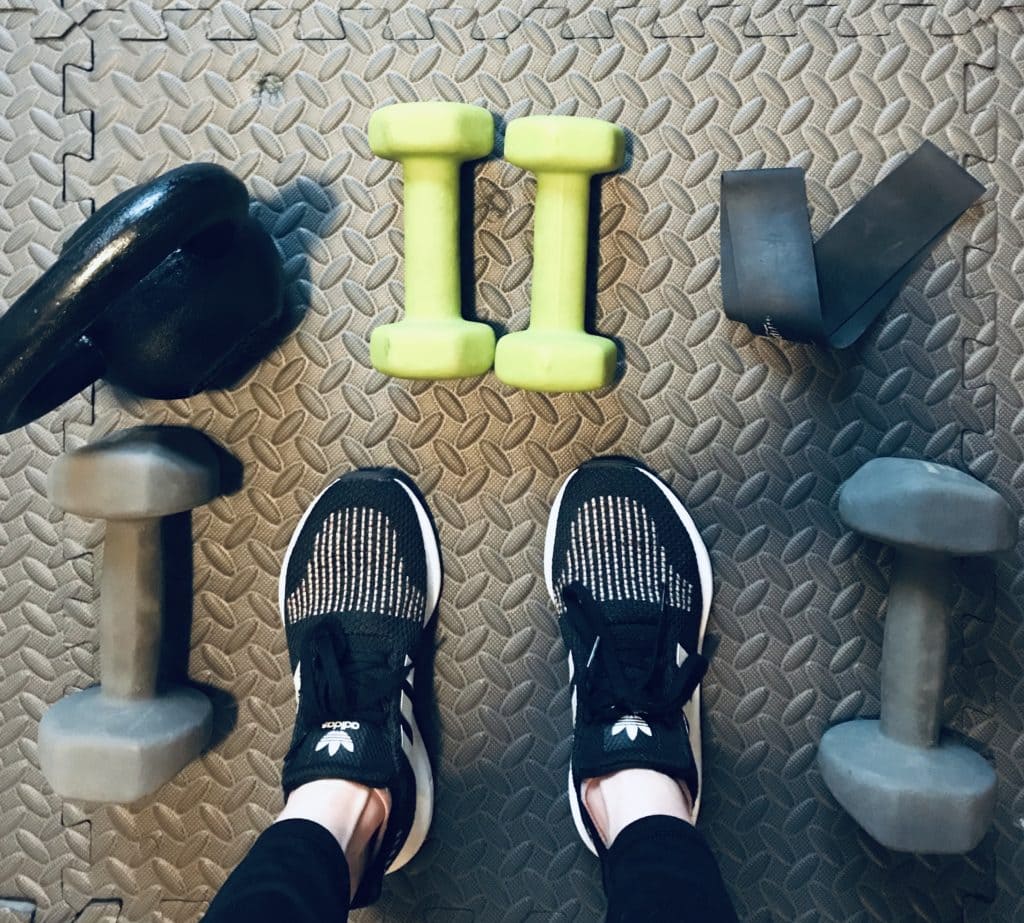
Finally in 2019, 10 years after my initial marathon running injury, I changed my focus and New Year’s resolution. This year, I removed any PR goals and replaced them with focusing on how to fully recover from this running injury. Instead of time spent running, I devoted it to researching why my glutes weren’t firing and how to turn them back on. I read numerous articles, watched Youtube videos, and purchased a couple of programs promising to fix the problem.
After all of that, I was able to put together two basic principles that helped me understand why I couldn’t get my glutes to fire and how to turn them back on. Since implementing these two principles, I have been able to engage my muscles appropriately every time. I created a short warm-up that I perform before every workout to get things firing. The quick warm-up has made all the difference for me, and I share that at the end of this post in case it helps you, too.
The 2 Key Principles That Helped Me Master Glute Activation
1. If a muscle is tight or flexed, it’s impossible to activate the opposing muscle.
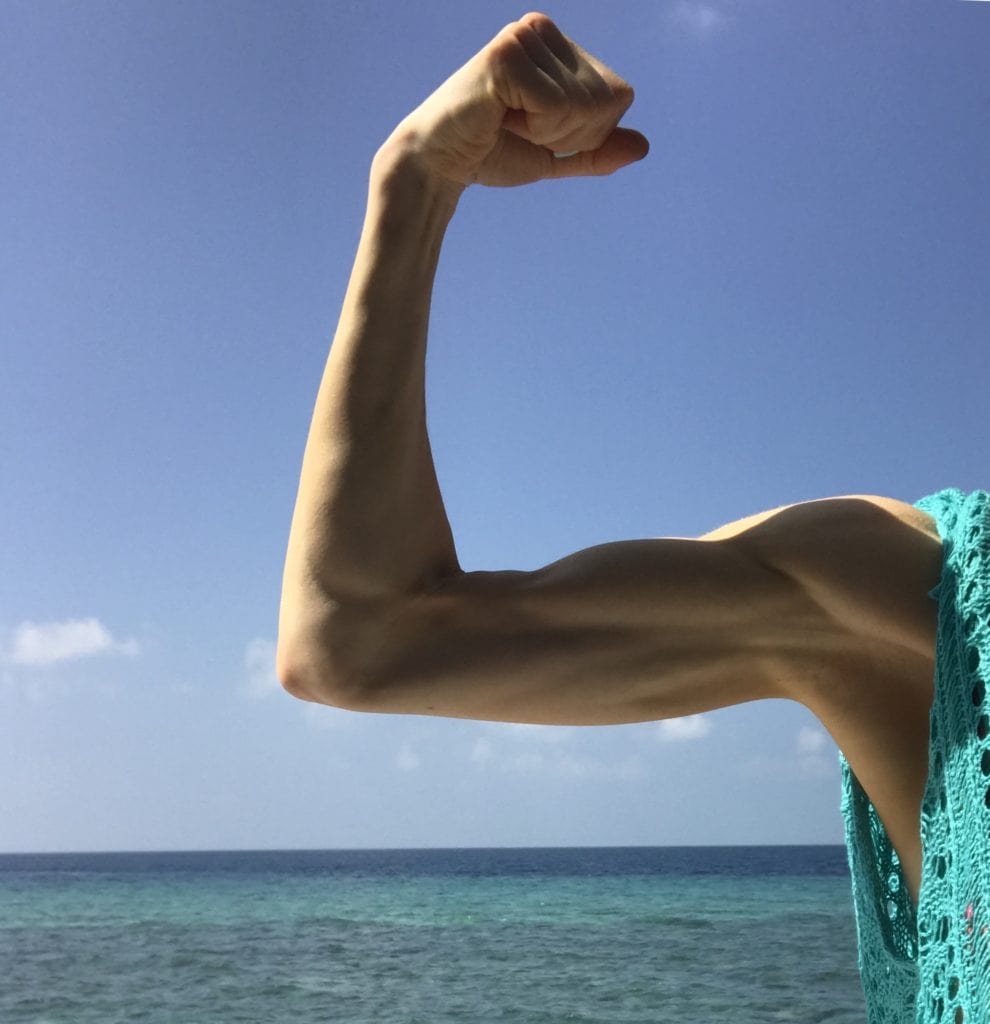
In this case the hip flexors are the opposing muscle group to the gluteus maximus. If the hip flexors are tight, it’s going to be almost impossible for the gluteus maximus to fire and flex. This seems confusing until you think about the bicep and tricep in the same way. Flex your bicep. Now try to flex your tricep at the same time. Impossible! The body is designed so that the opposing muscle relaxes and elongates while the other shortens and flexes.
When I realized this principle, it was a major light bulb moment for me. I could do all of the glute activating exercises I wanted, but if my hip flexors were tight it was going to continue to be a struggle to get those glutes firing. Why were my hip flexors tight? Running. You know what else makes hip flexors tight? Sitting. Between those two things, I’d say the majority of us are prone to having tight hip flexors, and as a result, a literal lazy bum.
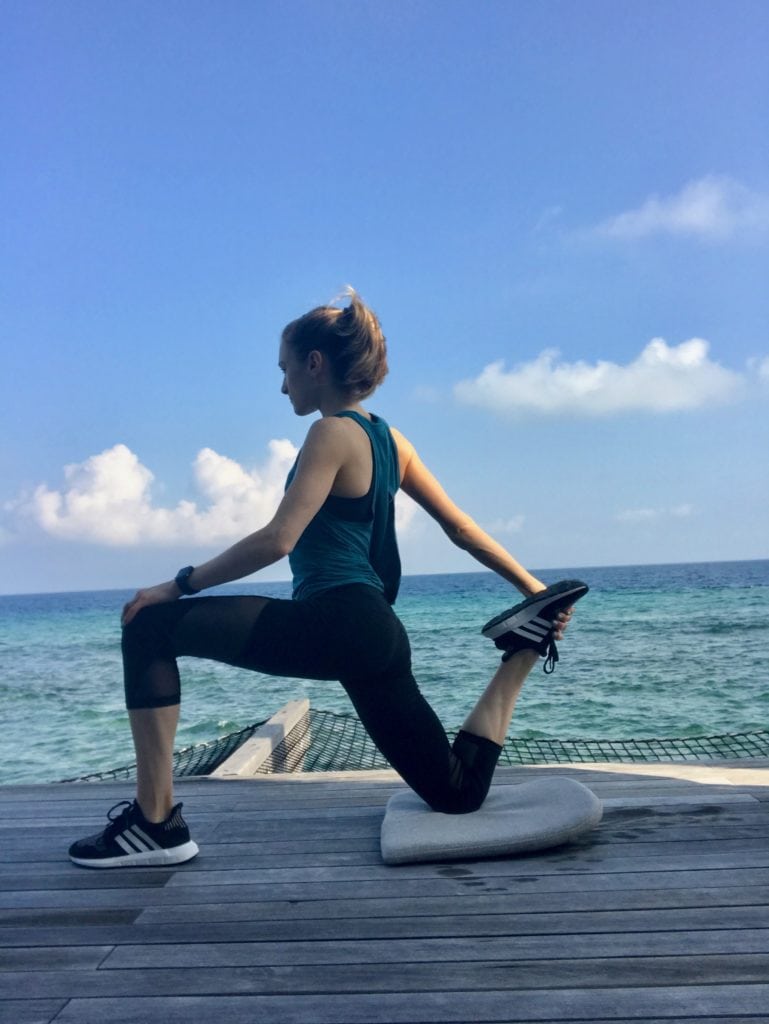
As soon as I started to take a couple minutes before my workout and glute activating exercises to stretch my hip flexors, I could suddenly feel my glutes waking up and engaging much faster than they had been. So simple, yet it took me forever to make this connection.
2. Preventing an anterior pelvic tilt and keeping knees from caving inwards will result in better glute activation.
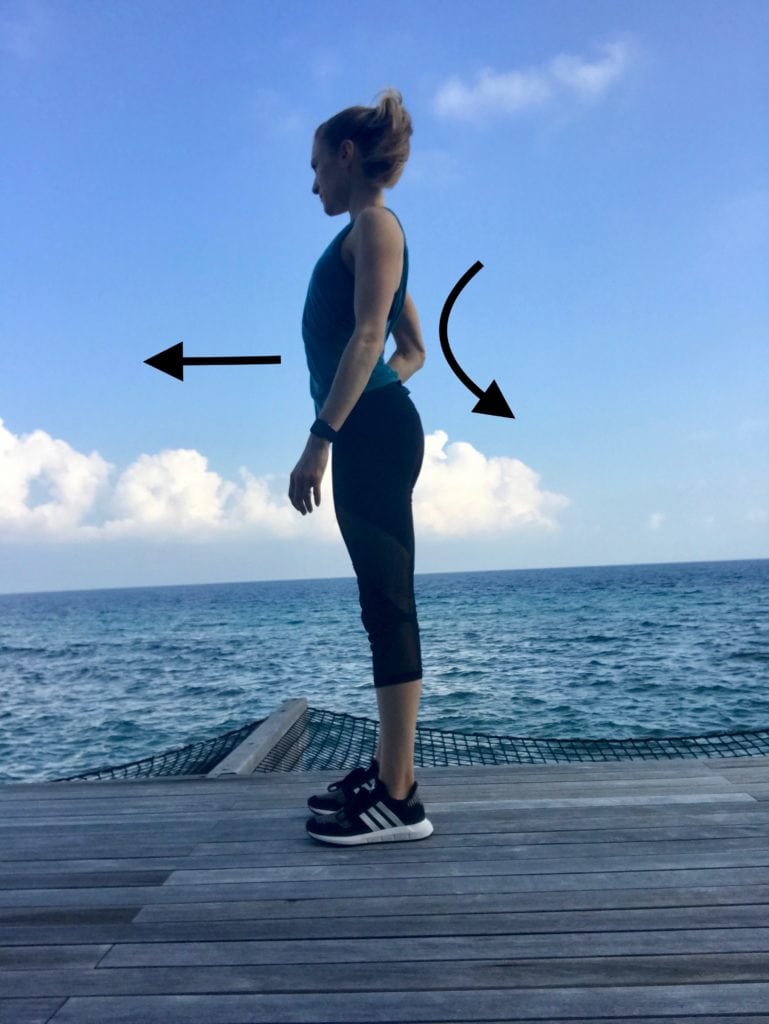
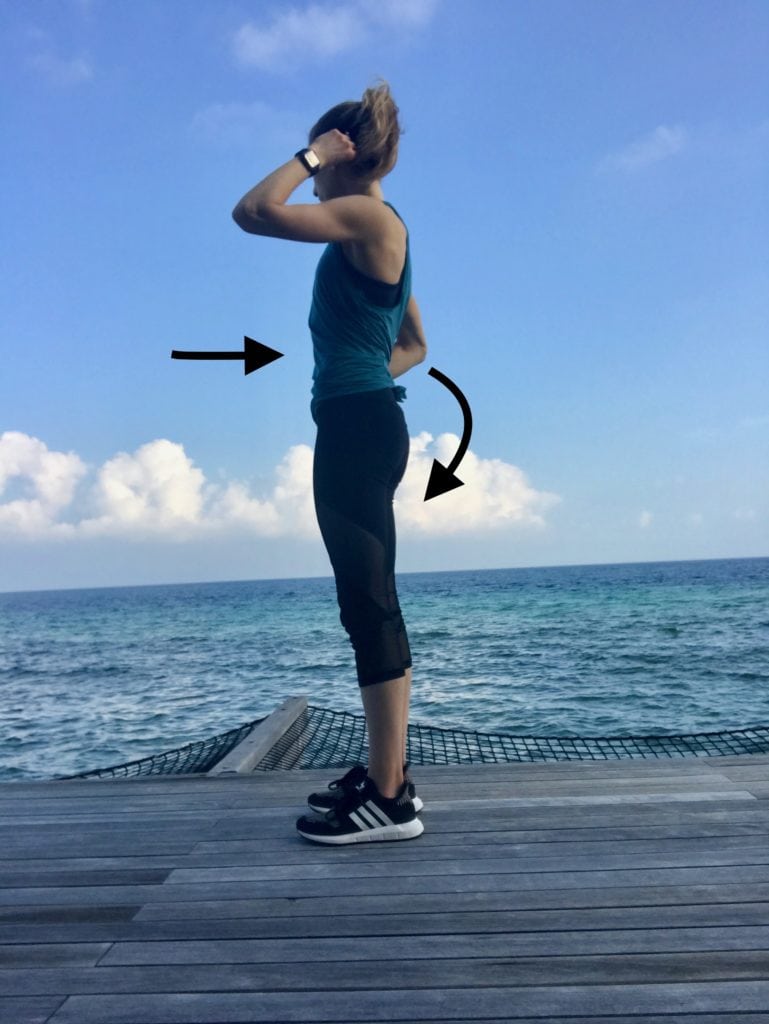
This is very closely related to the first principle, but it’s what I focus on as I’m performing all glute activating and strength exercises. If your hip flexors (and quads) are tight, there’s a good chance it’s working to create an anterior pelvic tilt (when your pelvis tilts forward, butt sticks out, and lower back is curved). This posture involves the same tightened antagonizing muscles we talked about above so that it’s difficult to activate the glutes. There are some simple cues and exercises I have learned to work against this posture.
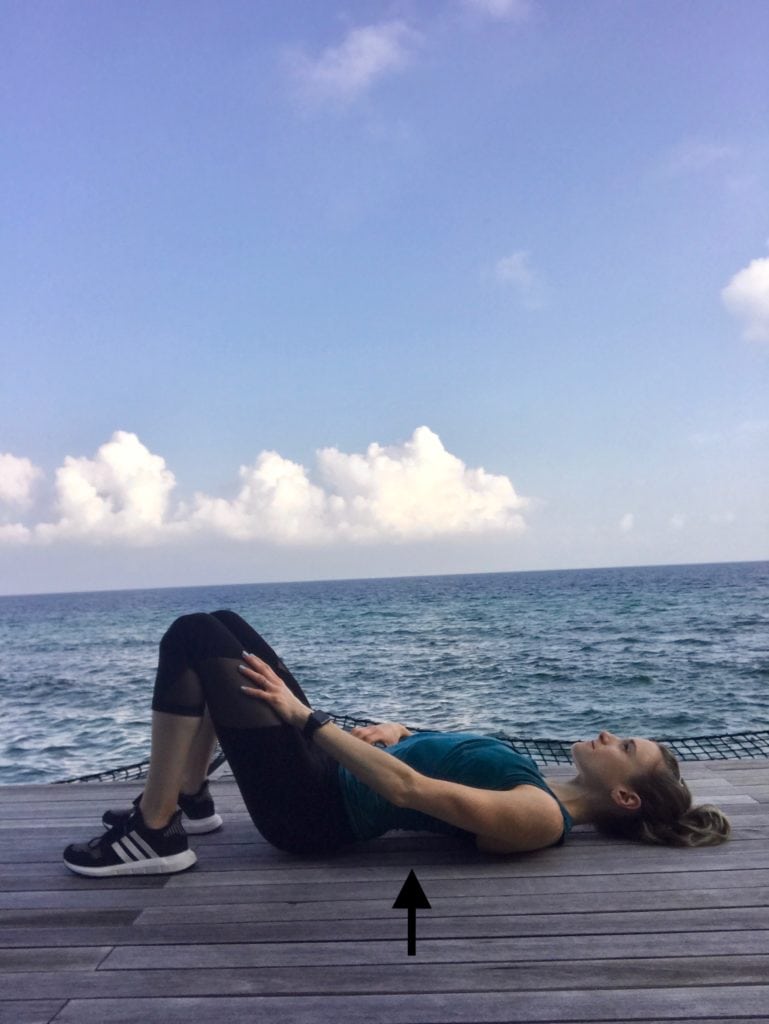
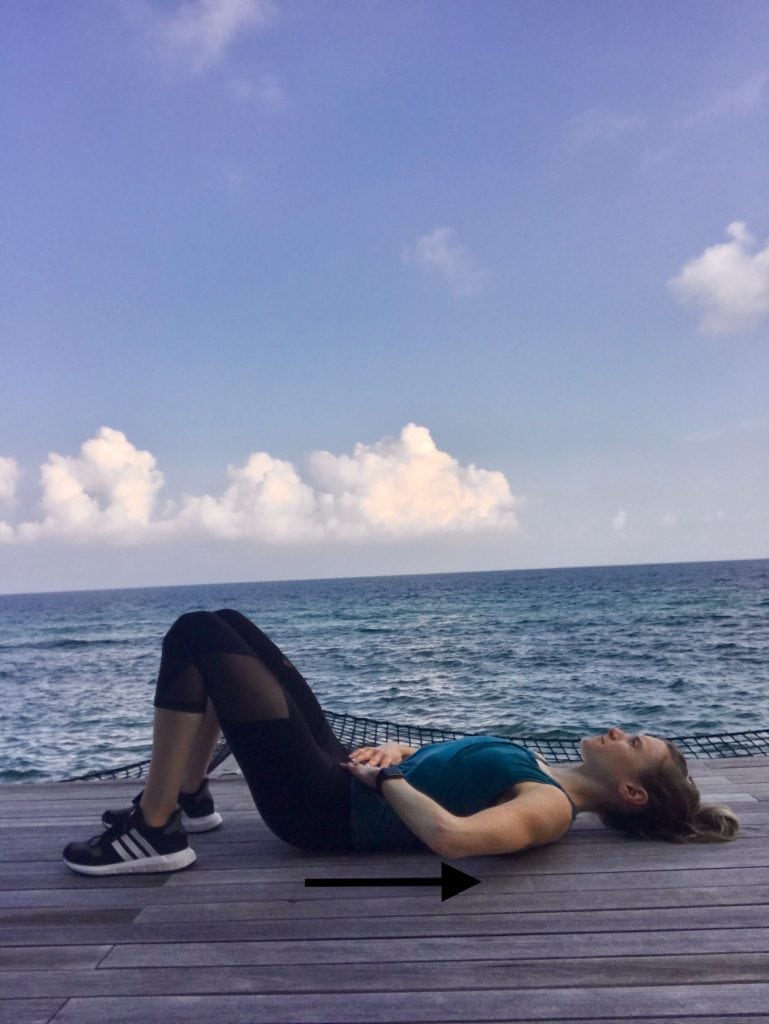
To correct an anterior pelvic tilt, draw your belly button in towards your spine while tucking your tailbone slightly under to bring your pelvis into a more neutral position. The easiest way to get into this position is lying on your back preparing for a glute bridge. The hollow of your back should be parallel against the floor (there should not be any space in-between your lower back and the ground). Maintain that position with your tailbone tucked and core engaged (drawing belly button to the spine) throughout the full glute bridge range of motion and feel your glutes fire up!
If my glutes aren’t instantly firing, I find it helpful to do a pulse at the top of the bridge. I also literally touch the muscle I’m trying to engage in order to create that mind-body connection. By doing that I’m trying to tell my brain that I need the nerves in the area to activate that muscle (this sounds silly, but it is really helpful).
When the hips and glutes are weak or unbalanced, there’s a tendency for the knees to buckle inwards during squats. Focusing on keeping the knees pressing outwards during exercises will also help to ensure the appropriate muscle activation (this is really helpful for me to focus on when performing the bulgarian split squats in my warm-up below when I’m trying to get the muscles warmed up).
My Quick Glute Activating Warm-up
- 1-2 minutes of cardio to loosen up (jumping jacks, jump rope, etc.)
- Hip flexor stretch – hold for 10 seconds, repeat 3-6 times each side
- Glute bridge x 10-15
- Frog-leg glute bridge x 10-15
- Body weight bulgarian split squat x 10-12/side
Hip Flexor Stretch
If you’re not familiar with these stretches and exercises, I recommend googling each one to get detailed descriptions and cues from professionals. However, I added some photos as a visual reminder. There are a number of variations for hip flexors. I find that putting my arms up and away from the leg that is back gives me the best stretch in my hip flexors.
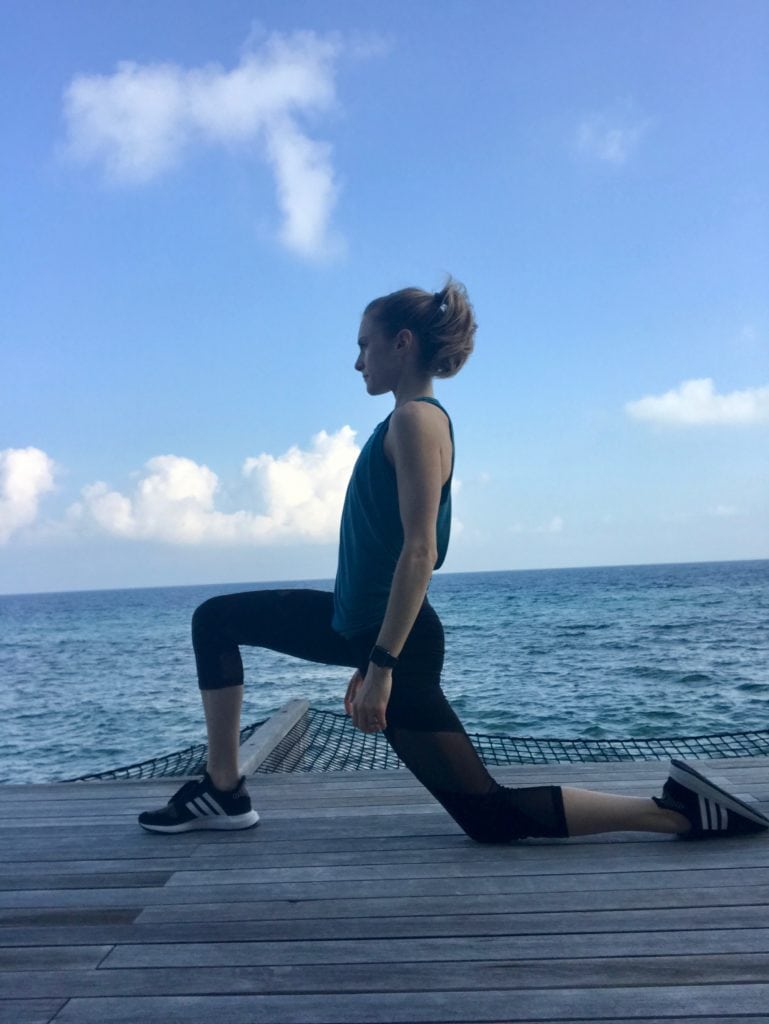
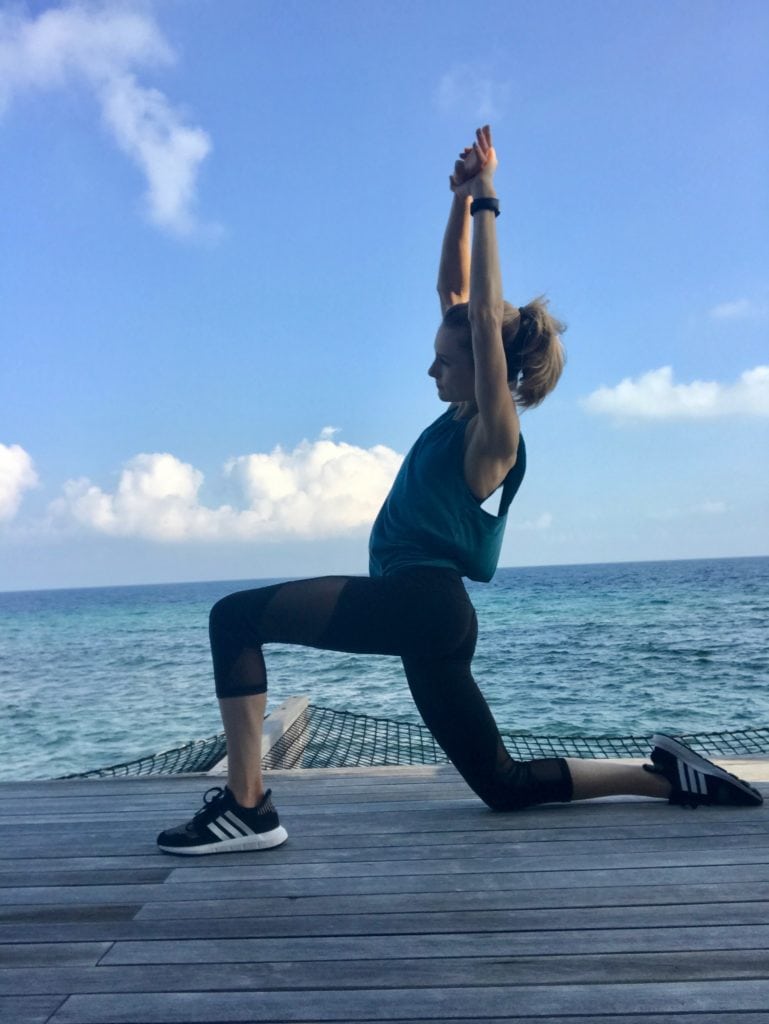
Sometimes I feel like tucking my toe under also gives a better stretch. The most important thing is that you find what stretches and exercises work and feel best for you.
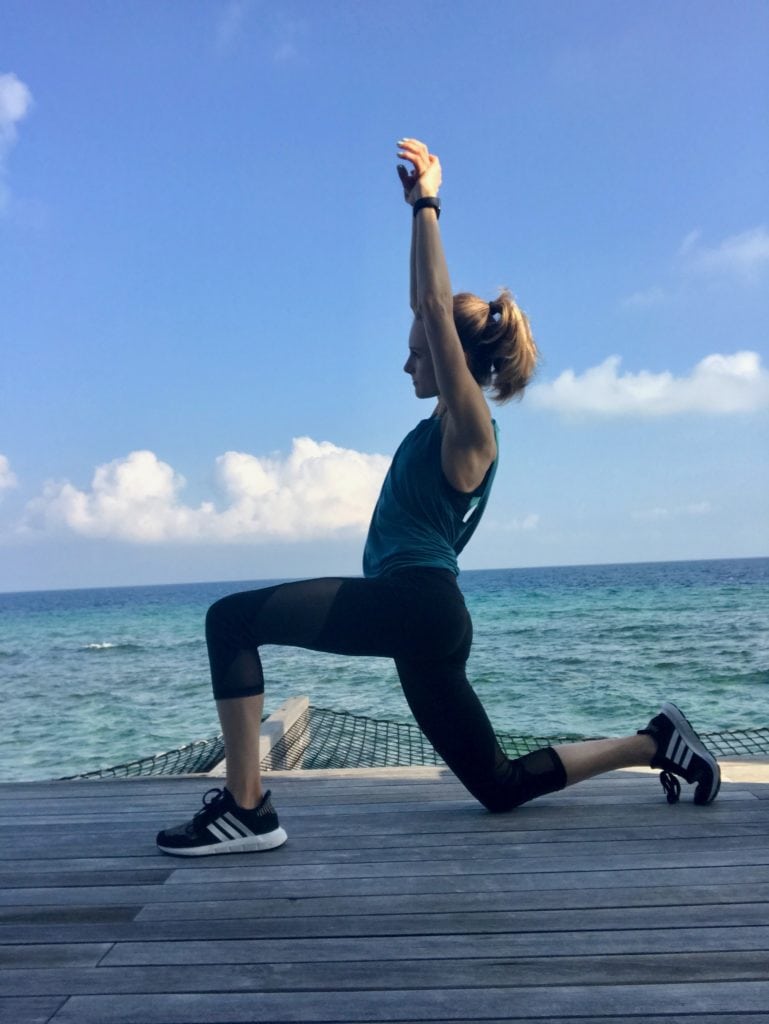
Glute Bridge
I think everyone is familiar with a glute bridge. The biggest thing is to make sure you are starting in the correct posture with your back parallel with the ground to get the most out of this exercise. I like starting with this exercise because it helps to set me up to maintain this posture throughout the other exercises.
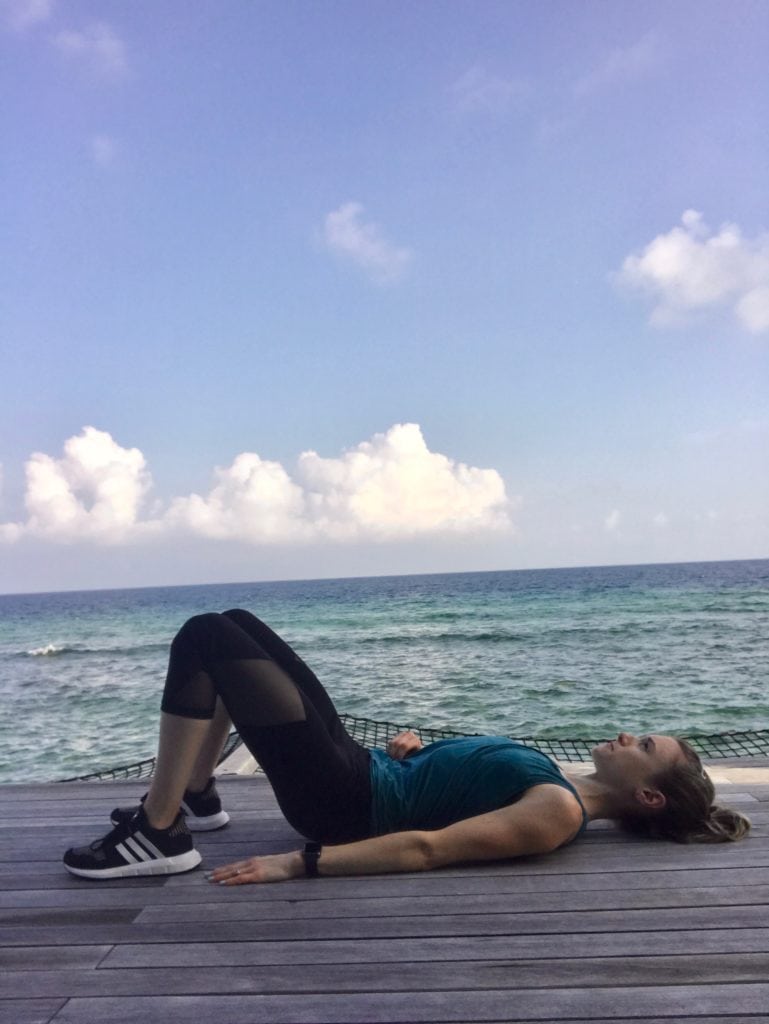
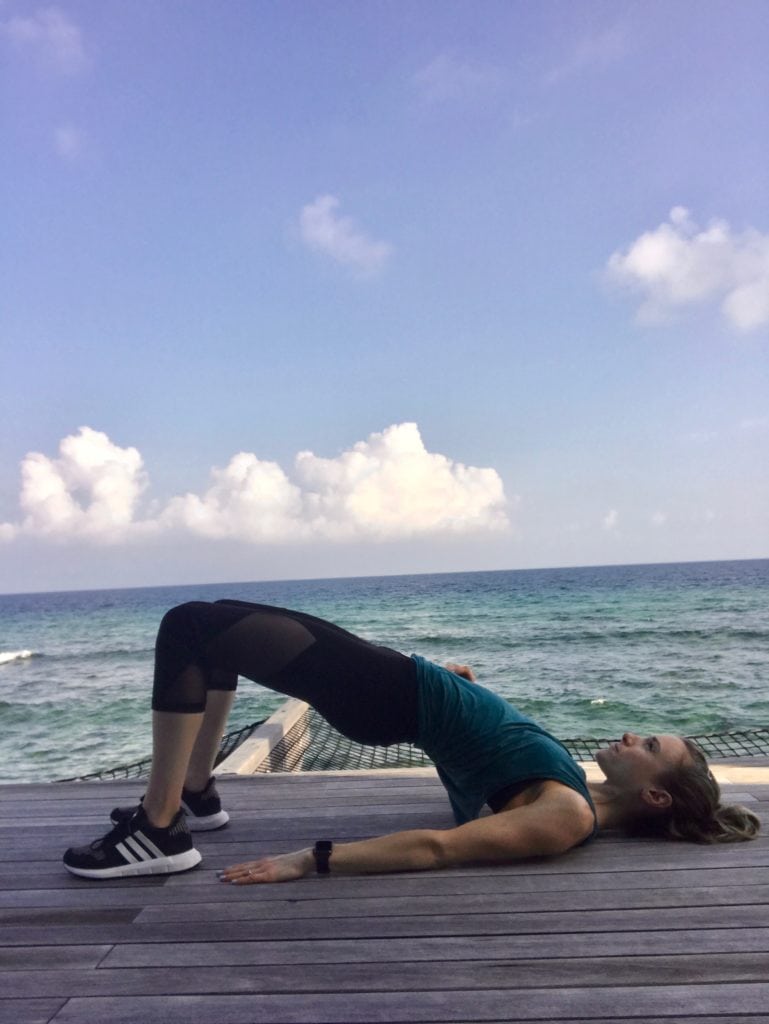
Frog Leg Glute Bridge
I love this one for activating the outer part of the glute. Once again, it’s important to start with the back parallel with the ground. This one is awesome for lighting up those glutes. It can also be helpful to do a few pulses at the top. Yes, I do this exercise even in public gyms. I just don’t make eye contact with other gym go-ers. Not really sure if that makes it better or worse.
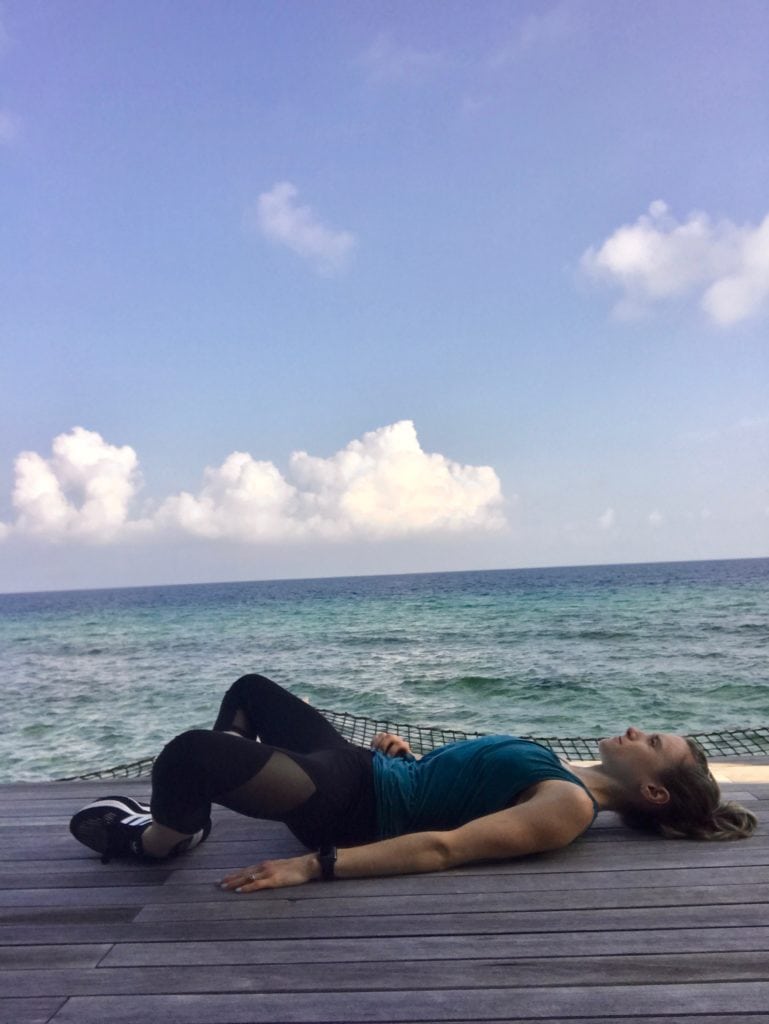
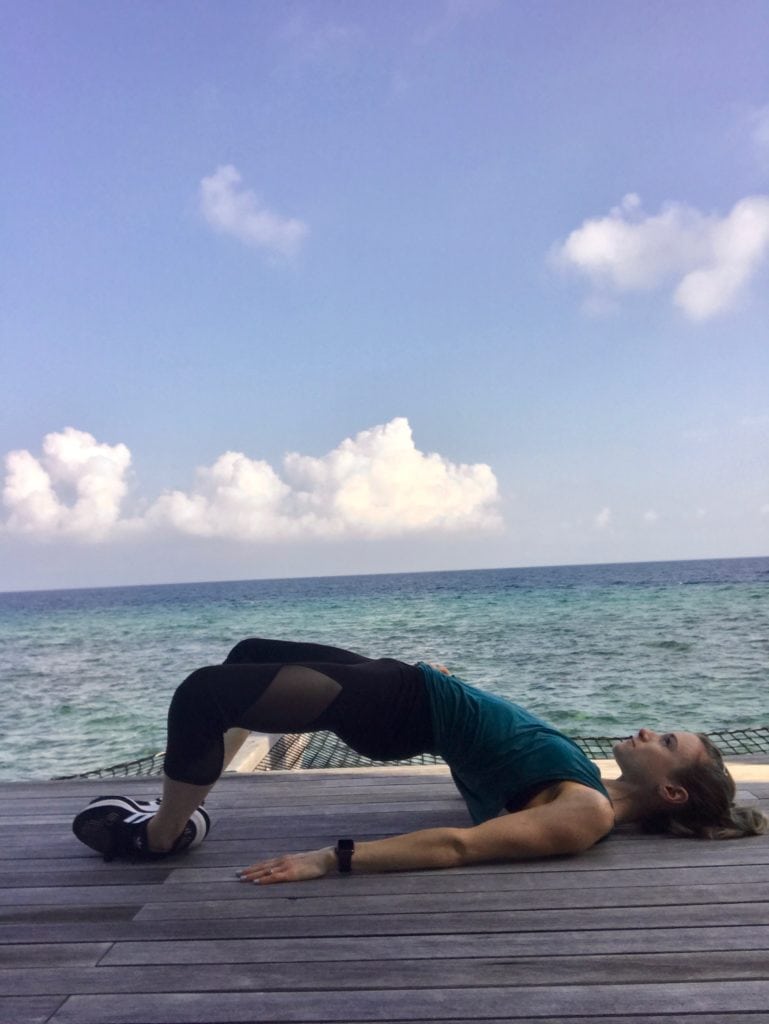
Body Weight Bulgarian Split Squats
I definitely recommend watching a YouTube video or looking up detailed instructions on this exercise if it’s new to you. The big thing is making sure that you’re keeping your weight in your heel, moving back into a squat, and that you’re not letting your knee cave in.
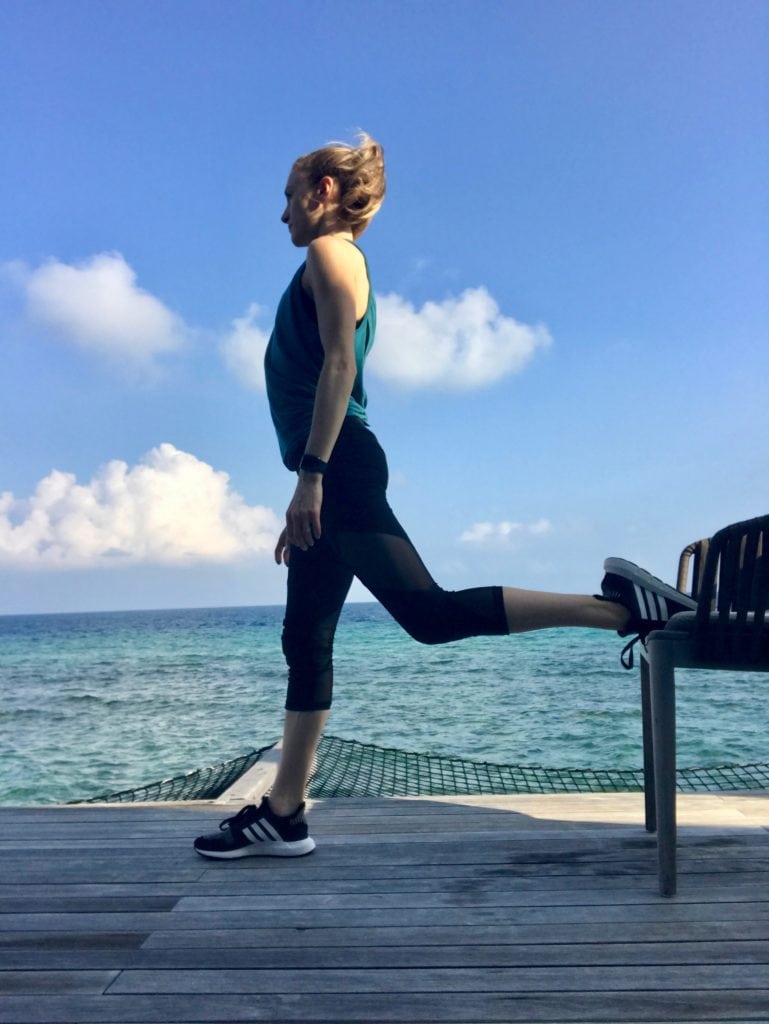
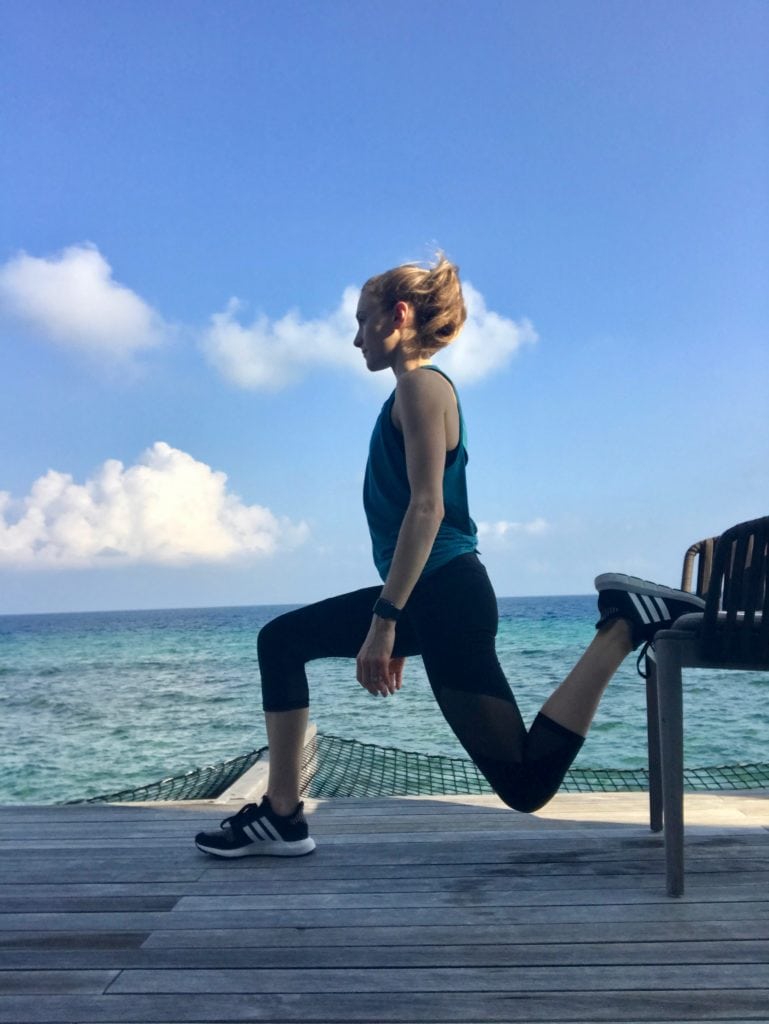
Yes, I put a star on my butt. This blog makes me do weird things that I’ll probably regret. I’m trying to show where you should be feeling this exercise. This is one of those exercises where I will sometimes literally put my hand over the muscle I’m trying to activate to make sure that it’s engaging appropriately.
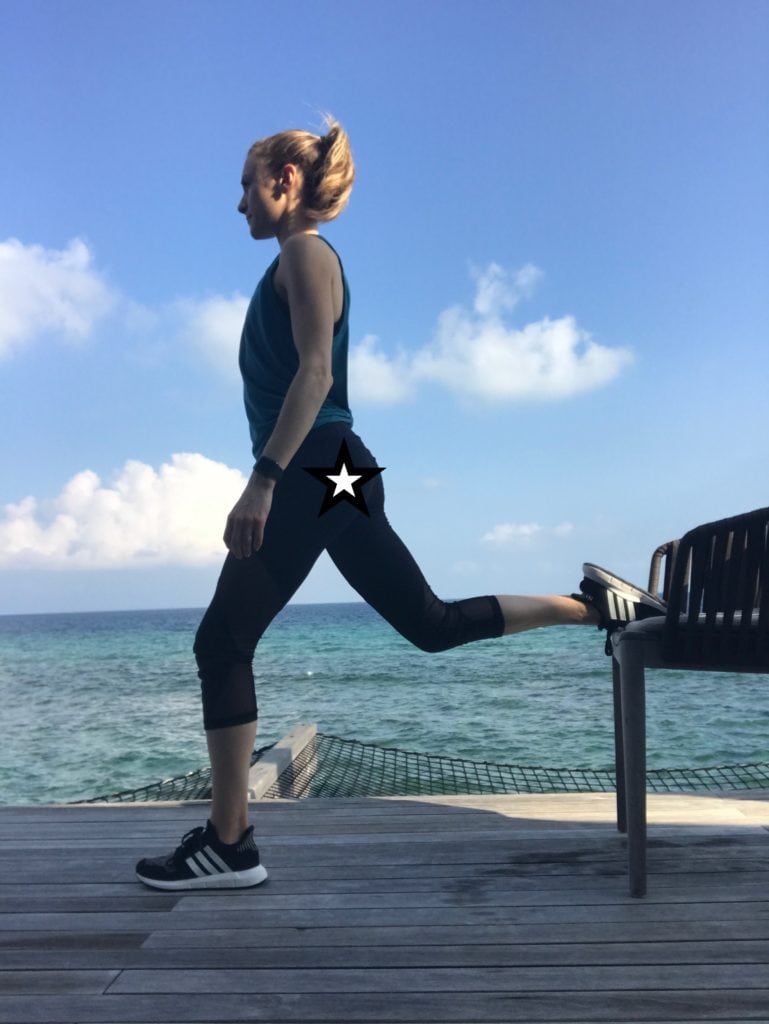
A few final pearls
- When trying to get your glutes activating again, go light on the weight. There will be PLENTY of time to build strength, but being overly ambitious with weights is only going to result in an injury and derail progress. Focus on really ensuring that the muscles are activating. I’d recommend starting with body-weight only exercises to start.
- Repeat the warm-up exercises as frequently as needed throughout a workout to keep the glutes activating. When I first started implementing these exercises, it wasn’t uncommon that my glutes would be engaged for the first round but start to dwindle for the second round. By investing the time to go back and perform at least a couple of the warm-up exercises to get the glutes firing again before continuing, I was able to get so much more out of my workout. Keep in mind: while it’s super annoying to have to pause and do these exercises during a workout (especially if you’re pressed for time), you’re not going to see results from the exercises if you’re not engaging the appropriate muscles.
- Speaking only from my own personal experience (again, I’m no expert), I really believe that the majority of running injuries can be tied back to underlying hip instability and weak glutes. You’ll notice the running injuries that I have had have been in the front and back of my hip and my knee, but I think they resulted because of hip instability causing too much repetitive stress to tendons and muscles trying to overcompensate.
- This year, I finally took a step back and realized that my fear of losing endurance or speed by taking a couple months off of running was misguided. I know how to train for speed and endurance, and I can easily get that back. What I have never been able to do is run through an injury and have it miraculously get better. That realization is what helped me finally take a break until I’m truly ready to run injury free. I hope that thought process is helpful to anyone else having a tough time taking a step back to deal with an injury.
- Don’t forget to incorporate lateral glute movements into your strength workouts. As runners (and most humans in general), we’re constantly moving in one plane (forward and backwards). I’m sharing this quick warm-up that works well for me to get the muscles firing, but during strength workouts I make sure to do lateral movements to strengthen the smaller gluteus medius and minimus. Banded lateral walks, side lunges, ice skaters, clam shells, side shuffles, etc. are all great ones.
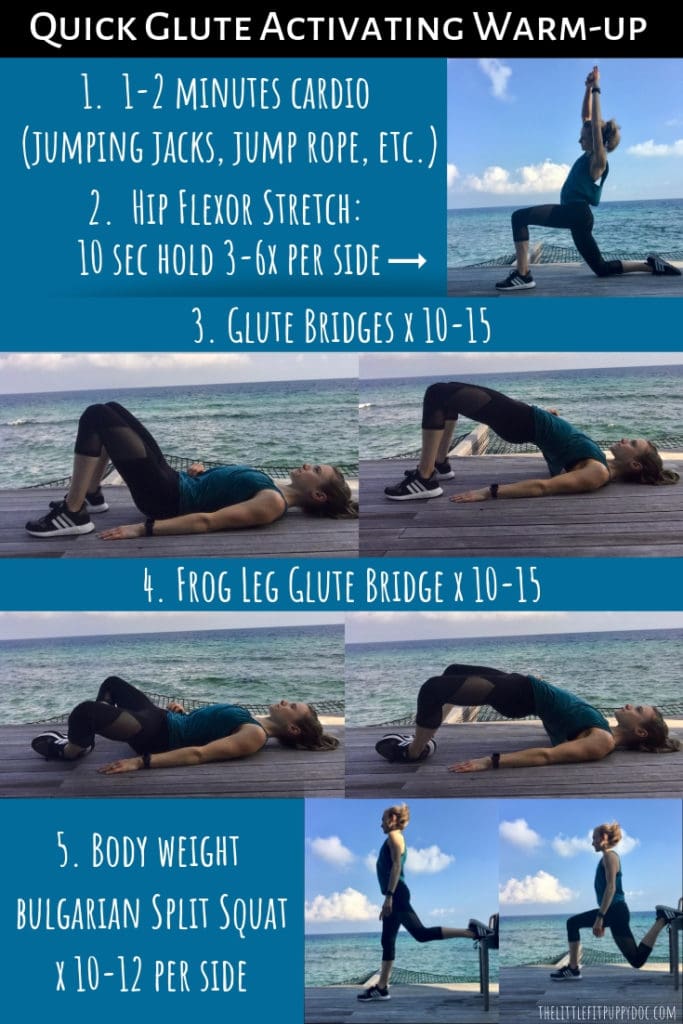
What are your favorite glute activating exercises?
Have you had to deal with an injury that forced you to take a break from your workouts? How did you cope?


Hello 🙂
Just wanted to thank you for posting this article, it was very informative.
I am someone who is also active; I play basketball, lift weights, and go on hikes. I worked a desk job and it wrecked the whole kinetic chain in my body. They say sitting is the new smoking lol.
I hope to make a successful recovery like you did, thanks again for this post!
Hi James, I’m so glad to hear you found it helpful! So true about sitting leading to so many health issues. Since this post I also found that leaning forward during the bulgarian split squats helps to activate the glute muscles even more. Good luck with a smooth recovery. 🙂
Thanks for this post. I don’t think I’ve ever properly fired my glutes during a run because of many years of sitting before I began running and a desk job. It’s led to a lot of weakness on my right leg. Anyway, I’ve become way more conscious of this and still try to get them activated but haven’t had much luck. I’m hoping to incorporate your warm up routine and keep working at it. I think it could lead to a big performance break through for me if I can master it. I hope to post back here again one day with an update.
Thanks for your comment, Bill. I hope you find the warm up helpful! I still do this warm-up before running (and every workout really) and it has made a huge difference for me. If you have a resistance band I have also added lateral band walks and monster walks and that has really helped to activate them from every angle. Let me know how it goes! 🙂
Hi,
Reading your article gave me a little bit of hope. I am a 36 year old former triathlete with a 12 year long history of ITBS and achilles tendinopathy issues. I have recently given up my desperate obsession of holding onto whatever little fitness i had left and started doing glute activation exercises with hopes of running pain free by or before i get to 40. My gluteal amnesia is quite severe and i am looking for an idea and/or guide (really is probably more of a quest for validation and hope) to make sure i’m on the right track. Can you tell me how long it was/has been before you were able to jog painlessly?
Thanks for the article and thanks in advance for your response.
Hi Diego, I think you’re absolutely on the right track! While I’m not a PT, I do think your goal of running pain free by 40 is reasonable. It took months vs years for me once my glutes were stronger and firing properly. I do recommend also adding lateral movements to the warm up (side steps with a glute band and monster walks are my favorite) to really help fire the glutes from all directions.
If you haven’t tried acupuncture that’s another therapy I would highly recommend. After running a marathon I was at the point where I couldn’t walk without being in pain from a really tight ITB. After just a few sessions that helped to decrease the pain and inflammation so that I could start jogging. Helpful to address the pain signal while building glute strength is a nice recipe for success. 🙂
Good luck! Let me know how things go with these exercises or if you have any other questions!
-Amelia
Excellent post. Very helpful, easy to grasp and clear advice. Thank you so much for putting this out there.
You’re welcome, Steve! I’m so glad you found it helpful. 🙂